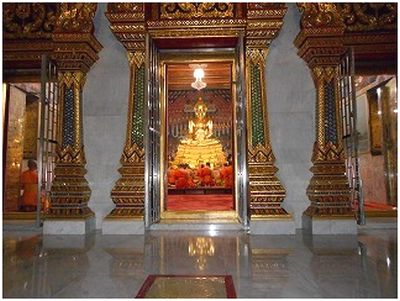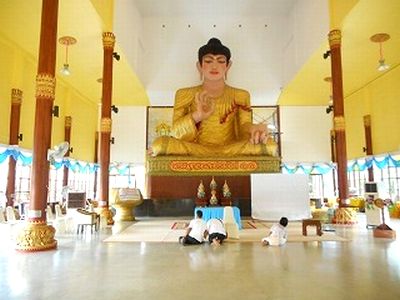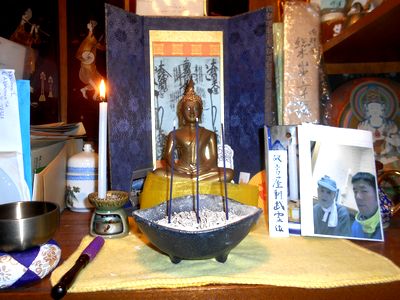It can be said that the “Buddha statue” is the object of worship (the form that expresses the figure of the Buddha) that respects Buddha who has gained “enlightenment” as the object of worship. In Theravada Buddhist country (Thailand) and Mahayana Buddhist country (Japan), the objects that appear in the original scriptures are Buddhist statues and stupas.
This article gives an overview of the differences between Thai and Japanese Buddha statues. In Thai it is called Probate Loop, and in English it is called Image of Buddha.



Shaka Nyorai statues are common in Thailand, but there are also Kannon Bodhisattva statues. In Japan, there are the Amida Nyorai statue of the Jodo sect and the Dainichi Nyorai statue of the Shingon sect. In the Zen sect, the statue of Shaka Nyorai is the principal image, and there is also a mandala of the Nichiren sect.
Nyorai → Bodhisattva → Myo → Tenbe and the statue of the grand master (founder) are also included. (Left to right, higher rank)
The color and shape are generally gold colored (gold) sitting or standing in Thailand. In Japan, sitting statues are mainly made of the ground color of the material rather than gold. There are also eleven-faced Kannon and horse-headed Kannon with different faces, and there is also Senju Kannon with plenty of hands. There is also a statue with one leg upright
In Thailand, there are many seals* (traditional seals) such as legal seals “Hokkaijo-in” (zen seals), abhayamudra (a symbolic gesture of fearlessness, protection and peace), Yogan-in (wish-granting mudra), and Sokuchi-in (Earth-Touching Mudra)
In addition, there are various shapes of hands in actual meditation (Zen Dhyāna Mudrā). The statue of Amida Nyorai in Japan is generally a combination of nine types of seals.
In Thailand, there is a Wat Traimit Golden Buddha with a purity of 60%, but when installing it outside, it is mostly made of stone (concrete), and indoors it is mostly made of gold and copper. In Japan, the Todaiji Temple and the Great Buddha of Kamakura are mostly made of gold and copper. Some statues are made of wood, dry lacquer, or clay.
In Thailand, the life of a monk is enough with “one garment, one bowl” (deemed as the minimum required clothes and eating utensil), so he doesn’t have anything to bring. In Japan, as represented by the statue of Yakushi Nyorai, there are many Buddhists implements that you can hold in your hand or use for events. There are also “armpit samurai” pairs.
*The shape that the Buddha image represents with the fingers of both hands is called a symbolic sign. The hands of the Buddha statue have meaning in all its shapes.
A typical form is the Buddhist meditation (Zen meditation), which represents the state of stabilizing the mind and entering into meditation. The shape of Shaka (Nyorai) has forms such as preaching, wishes and exorcism, and mitigate of awe.
@The Homepage for Wat Japan (Japanese temple in Thailand)
http://kawai.servebeer.com/~masahiro
http://marsk.html.xdomain.jp